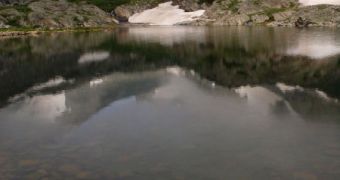Nitrogen is one of the important chemical for life on Earth. It composes the majority of our atmosphere, and it is an inert gas, meaning that it does not interact with other chemicals in its stable form. But the amounts of nitrogen in the air are currently changing, with the main additional sources being the burning of fossil fuels and also the fertilizers used in agriculture. These two sources release vast amounts of the chemical in the air, ground, and water, and effects are starting to show, a new study founded by the US National Science Foundation (NSF) shows.
According to a new scientific paper, published in the latest issue of the respected journal Science, it would appear that the impact of airborne nitrogen is larger than thought all around, but especially on alpine lakes. Arizona State University (ASU) experts, led by limnologist James Elser, analyzed a number of 90 freshwater alpine lakes in Colorado, Sweden, and Norway, and came to the conclusion that the levels of nitrogen were becoming increasingly dangerous in these areas.
Another concerning fact is that the nitrogen levels are also very high in lakes that are far away from cities and industrial plants, which would suggest that the chemical spreads far beyond its previously-established range. Further details of the scientific measurements are detailed in the paper “Shifts in lake N:P stoichiometry and nutrient limitation driven by atmospheric nitrogen deposition.”
“These findings reveal that nitrogen enrichment of the atmosphere, caused by humans, is altering global patterns of lake chemistry and productivity in ways likely to impact the structure and functioning of these ecosystems,” says the program director at the NSF Division of Environmental Biology, Alan Tessier. The NSF department offered the funding for the new research. “Inputs from pollution in the atmosphere appear to shift the supplies of nitrogen relative to other elements, like phosphorus,” Elser adds.
Phytoplankton living in these nitrogen-rich lakes, which can be used to measure their health, is now starting to be limited by how much phosphorus they can acquire. “And phosphorus-limited phytoplankton are a poor food source. They're basically 'junk food' for zooplankton, which in turn are food for fish. Such a shift could potentially affect biodiversity. However, we don't know the extent because, unlike in land-based ecosystems, the impacts of nitrogen deposition on aquatic systems have not been widely studied,” Elser reveals.

 14 DAY TRIAL //
14 DAY TRIAL //